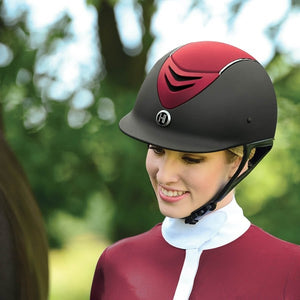
Got Snow Pads?
Winter brings unique challenges for horse owners, particularly when it comes to hoof care. One common issue is the accumulation of snow and ice in a horse’s hooves, which can lead to discomfort, instability, and even injury. Snow pads are a popular solution to this problem, but like any piece of equipment, they come with their own set of advantages and disadvantages. Understanding the different types of snow pads can help you decide whether they’re right for your horse.
What Are Snow Pads?
Snow pads are a type of insert placed between the horse’s hoof and shoe to prevent snow and ice from packing into the sole. When snow compacts in a horse’s hooves, it can create a ball or “snowball effect,” making it difficult for the horse to walk and increasing the risk of slips or strains. Snow pads work by either physically blocking snow from accumulating or by creating a mechanism that dislodges the snow as the horse moves.
Types of Snow Pads
There are two primary types of snow pads, each designed with a unique approach to preventing snow buildup:
-
Rim Pads:
- Design: Rim pads are U-shaped and fit around the edge of the hoof, leaving the center of the hoof exposed.
- Functionality: They rely on the natural flexion of the hoof and shoe to break up snow as the horse moves.
-
Pros:
- Lightweight and less bulky than full pads.
- Allows for better airflow to the hoof sole.
- Easier to fit and adjust.
-
Cons:
- Less effective in extremely wet or sticky snow conditions.
- May not provide adequate protection for horses with sensitive soles.
-
Full (Bubble) Pads:
- Design: Full pads cover the entire bottom of the hoof and usually include a dome-shaped bubble in the center.
- Functionality: The bubble compresses and rebounds with each step, actively dislodging snow from the hoof.
-
Pros:
- Highly effective in preventing snow buildup, even in heavy snow conditions.
- Offers extra protection to the entire hoof sole.
-
Cons:
- Heavier and bulkier than rim pads.
- May increase the risk of thrush or other moisture-related hoof issues if not cleaned regularly.
- Can be more expensive and require precise fitting by a farrier.
The Benefits of Using Snow Pads
- Enhanced Traction: Snow pads reduce the risk of slipping on icy or snowy surfaces, improving your horse’s stability and confidence.
- Comfort: By preventing snowballs from forming in the hooves, snow pads eliminate the discomfort caused by compacted snow.
- Reduced Risk of Injury: Fewer slips and less strain on the tendons and ligaments mean a lower chance of injuries during winter months.
- Versatility: Snow pads can be paired with other traction aids, such as studs or borium, for added grip on icy surfaces.
Cons of Using Snow Pads
- Increased Maintenance: Snow pads can trap dirt, moisture, and debris, requiring regular cleaning to prevent hoof infections like thrush.
- Cost: Both the pads and the additional farrier labor to apply them can increase the overall cost of winter hoof care.
- Weight: Full pads, in particular, can add extra weight to the horse’s hooves, which may affect performance in some horses.
- Limited Necessity: In regions with milder winters or for horses that are primarily stalled, snow pads may not be necessary and could be an unnecessary expense.
Are Snow Pads Right for Your Horse?
Deciding whether to use snow pads depends on several factors:
- Climate: Horses in areas with frequent snowfalls and icy conditions benefit the most from snow pads.
- Activity Level: Horses that are ridden or turned out regularly in winter conditions are more likely to need snow pads than those that remain in a stall or indoor arena.
- Hoof Health: If your horse has sensitive soles or is prone to thrush, you’ll need to take extra precautions when using full pads.
Snow pads can be paired with additional traction aids, like studs, for maximum safety on icy surfaces.
In conclusion, snow pads can be a game-changer for winter hoof care, providing comfort and safety for horses in snowy and icy conditions. By understanding the differences between rim pads and full pads, as well as weighing the pros and cons, you can make an informed decision that suits your horse’s specific needs. With proper use and maintenance, snow pads can help ensure a safe and comfortable winter season for both you and your horse.






